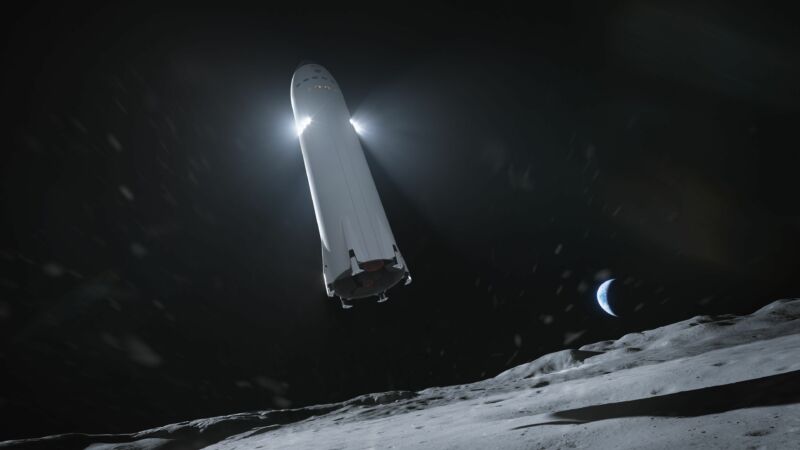
Last Friday, NASA awarded a $3.4 billion contract to a team led by Blue Origin for the design and construction of a second Human Landing System to fly astronauts down to the Moon.
The announcement capped a furious two-year lobbying campaign by Blue Origin owner Jeff Bezos to obtain a coveted piece of NASA's Artemis program. NASA also notched a big win, gaining the competition with SpaceX it sought for landing services. But there is a more profound takeaway from this.
After losing the initial lander contract to SpaceX two years ago, Blue Origin did not just bid a lower price this time around. Instead, it radically transformed the means by which it would put humans on the Moon. The Blue Moon lander is now completely reusable; it will remain in lunar orbit, going up and down to the surface. It will be serviced by a transport vehicle that will be fueled in low-Earth orbit and then deliver propellant to the Moon. This transporter, in turn, will be refilled by multiple launches of the reusable New Glenn rocket.
To be sure, that is a lot of hardware that has yet to be built and tested. But when we step back, there is one inescapable fact. With SpaceX's fully reusable Starship, and now Blue Moon, NASA has selected two vehicles based around the concept of many launches and the capability to store and transfer propellant in space.
This is a remarkable transformation in the way humans will explore outer space—potentially the biggest change in spaceflight since the Soviet Union launched the Sputnik satellite in 1957. It has been a long time coming.
"We knew these were the right ideas decades ago," said George Sowers, a professor of mechanical engineering at the Colorado School of Mines. "It is gratifying to see folks coming around."
What’s the big deal?
For pretty much the entire history of spaceflight, humans have tried to brute force things. It took a rocket to put a small satellite into space. It took a bigger rocket to launch humans. And it took the humongous Saturn V launch vehicle to ultimately put two humans on the surface of the Moon. The plan was always to pack everything needed for a mission—including propellant—onto a single rocket.
But this turns out to be a really, really inefficient way to do things. Imagine you want to drive from Miami to Alaska without stopping at a gas station. Even with an efficient automobile, it would take about 150 gallons of gas. Well, a tank that big won't fit into your trunk. No problem—you'll drive a full-size pickup and put a 250-gallon tank in the bed. It fits, barely. But there's a problem. You've added an extra ton to your truck, and your fuel efficiency drops. So now you have to pull a large trailer with an even larger gasoline tank. This is the tyranny of the rocket equation.
"The further you want to go in space, the mass of the propellant increases exponentially," Sowers said.
Large rockets can also be incredibly expensive. For example, NASA's Space Launch System rocket alone costs more than $2.75 billion per launch, and that doesn't include the price of a payload.
The solution to this problem involves several steps. The first is distributed launch. Two Falcon Heavy rockets, or four Falcon 9 rockets, can launch as much mass as NASA's Space Launch System rocket. The price for either option would be substantially less than $275 million, or one-tenth the cost of a single NASA launch. This exists today, and more partially reusable rockets are on the way.
reader comments
420